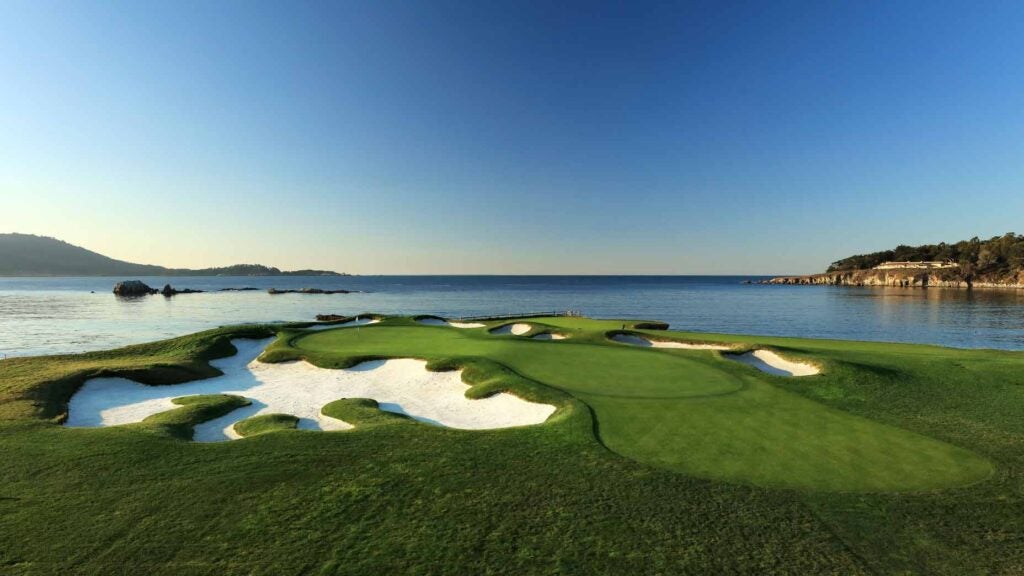Sports
Coastal Courses: Do They Dominate Golf Rankings?

Golf courses situated along coastlines often spark debate regarding their status in rankings. A recent episode of the Destination Golf podcast explored this topic, questioning whether courses like Pebble Beach would maintain their prestigious positions if they were not located on the water. The discussion reveals a complex relationship between course design, location, and ranking criteria.
The podcast hosts, including co-host Simon Holt, examined the perceptions surrounding GOLF’s World Top 100 rankings. With the release of this year’s list anticipated later this month, the conversation aimed to clarify several myths regarding what influences the panelists’ evaluations.
Holt raised an intriguing point regarding geographical context. In regions such as the UK and Ireland, where links courses are prevalent, a parkland course ranked among the top tier would likely be met with skepticism. Conversely, in the United States, with its diverse golf landscapes, several top-ranked courses like Augusta National and Merion are located inland. This suggests that coastal views alone are not the sole determinant of a course’s ranking.
The podcast emphasized that GOLF does not adhere to a rigid formula for its rankings. Raters assess course architecture based on merit, consciously avoiding biases introduced by non-architectural factors. However, the experience of playing golf is often enhanced by the surrounding landscape. For instance, the breathtaking backdrop of Cabot Cliffs significantly contributes to its appeal, suggesting that location plays a substantial role in the overall golfing experience.
Real estate considerations further complicate the discussion. A course with a waterfront view might benefit from increased property values, while a house adjacent to the fairway could detract from the experience, even if it does not directly impact play. This subjectivity makes it challenging to separate the course’s setting from its design.
As the podcast concluded, Holt shared his thoughts on the innate human attraction to coastal environments: “We’re all human beings. And there’s something about being human beings, we’re drawn to the sea.” Such sentiments highlight a fundamental aspect of the golfing experience, where nature and design intertwine.
Listeners can explore the full conversation on the Destination Golf podcast. The exchange of ideas provides valuable insights into the ongoing debate over the influence of coastal landscapes on golf course rankings. As the golf community eagerly anticipates the latest rankings, the conversation surrounding coastal versus inland courses continues to evolve.
-

 Top Stories2 weeks ago
Top Stories2 weeks agoMarc Buoniconti’s Legacy: 40 Years Later, Lives Transformed
-

 Sports3 weeks ago
Sports3 weeks agoSteve Kerr Supports Jonathan Kuminga After Ejection in Preseason Game
-

 Entertainment3 weeks ago
Entertainment3 weeks agoZoe Saldana Advocates for James Cameron’s Avatar Documentary
-

 Business3 weeks ago
Business3 weeks agoTyler Technologies Set to Reveal Q3 2025 Earnings on October 22
-

 Science3 weeks ago
Science3 weeks agoChicago’s Viral ‘Rat Hole’ Likely Created by Squirrel, Study Reveals
-

 Politics3 weeks ago
Politics3 weeks agoDallin H. Oaks Assumes Leadership of Latter-day Saints Church
-

 Lifestyle3 weeks ago
Lifestyle3 weeks agoKelsea Ballerini Launches ‘Burn the Baggage’ Candle with Ranger Station
-

 Lifestyle3 weeks ago
Lifestyle3 weeks agoDua Lipa Celebrates Passing GCSE Spanish During World Tour
-

 Health3 weeks ago
Health3 weeks agoCommunity Unites for Seventh Annual Mental Health Awareness Walk
-

 Health3 weeks ago
Health3 weeks agoRichard Feldman Urges Ban on Menthol in Cigarettes and Vapes
-

 Business3 weeks ago
Business3 weeks agoMLB Qualifying Offer Jumps to $22.02 Million for 2024
-

 Sports3 weeks ago
Sports3 weeks agoPatriots Dominate Picks as Raiders Fall in Season Opener









